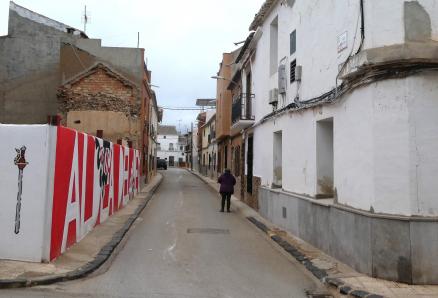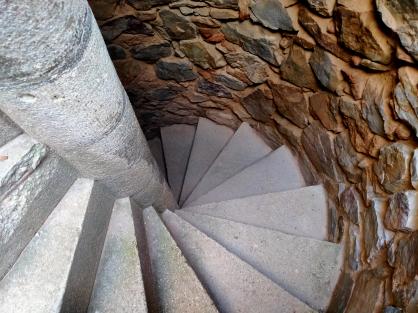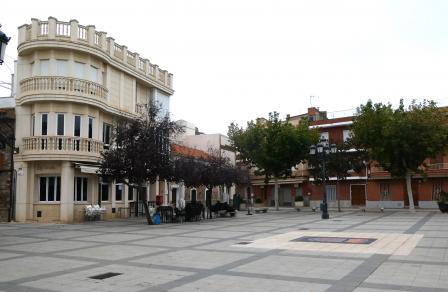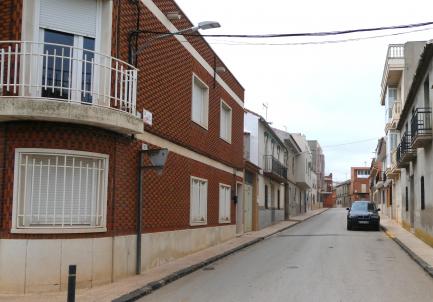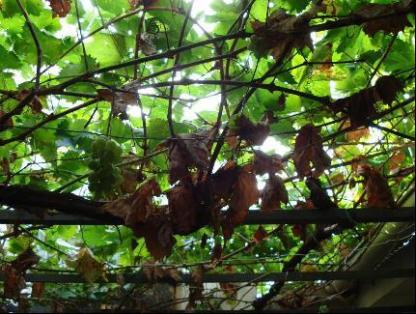The novel's structure is in episodic form. It is written in the picaresco style of the late sixteenth century. The full title is indicative of the tale's object, as ingenioso (Spain.) means "to be quick with inventiveness".[2] Although the novel is farcical on the surface, the second half is more serious and philosophical about the theme of deception. Quixote has served as an important thematic source not only in literature but in much of art and music, inspiring works by Pablo Picasso and Richard Strauss. The contrasts between the tall, thin, fancy-struck, and idealistic Quixote and the fat, squat, world-weary Panza is a motif echoed ever since the book’s publication, and Don Quixote's imaginings are the butt of outrageous and cruel practical jokes in the novel. Even faithful and simple Sancho is unintentionally forced to deceive him at certain points. The novel is considered a satire of orthodoxy, truth, veracity, and even nationalism. In going beyond mere storytelling to exploring the individualism of his characters, Cervantes helped move beyond the narrow literary conventions of the chivalric romance literature that he spoofed, which consists of straightforward retelling of a series of acts that redound to the knightly virtues of the hero.
Farce makes use of punning and similar verbal playfulness. Character-naming in Don Quixote makes ample figural use of contradiction, inversion, and irony, such as the names Rocinante[3] (a reversal) and Dulcinea (an allusion to illusion), and the word quixote[4] itself, possibly a pun on quijada (jaw) but certainly cuixot (Catalan: thighs), a reference to a horse's rump.[5] As a military term, the word quijote refers to cuisses, part of a full suit of plate armour protecting the thighs.
Windmills in La ManchaThe world of ordinary people, from shepherds to tavern-owners and inn-keepers, which figures in Don Quixote, was groundbreaking. The character of Don Quixote became so well-known in its time that the word quixotic was quickly calqued into many languages. Characters such as Sancho Panza and Don Quixote’s steed, Rocinante, are emblems of Western literary culture. The phrase "tilting at windmills" to describe an act of attacking imaginary enemies derives from an iconic scene in the book.
Because of its widespread influence, Don Quixote also helped cement the modern Spanish language. The opening sentence of the book created a classic Spanish cliché with the phrase de cuyo nombre no quiero acordarme, "whose name I do not want to remember."
"In a place at La Mancha, which name I do not want to remember, not very long ago lived a country hidalgo, one of those gentlemen or hidalgos who keep a lance in the lance-rack, an ancient shield, a skinny old horse, and a fast greyhound."[6]
[edit] Plot summary
Alonso Quixano, a retired country gentleman in his fifties, lives in an unnamed section of La Mancha with his niece and a housekeeper. He has become obsessed with books of chivalry, and believes their every word to be true, despite the fact that many of the events in them are clearly impossible. Quixano eventually appears to other people to have lost his mind from little sleep and food and because of so much reading.
[edit] First quest
He decides to go out as a knight-errant in search of adventure. He dons an old suit of armor, renames himself "Don Quixote de la Mancha," and names his skinny horse "Rocinante." He designates a neighboring farm girl, Aldonza Lorenzo, as his lady love, renaming her Dulcinea del Toboso, while she knows nothing about this.
He sets out in the early morning and ends up at an inn, which he believes to be a castle. He asks the innkeeper, who he thinks to be the lord of the castle, to dub him a knight. He spends the night holding vigil over his armor, where he becomes involved in a fight with muleteers who try to remove his armor from the horse trough so that they can water their mules. The innkeeper then "dubs" him a knight, and sends him on his way. Don Quixote battles with traders from Toledo, who "insult" the imaginary Dulcinea, and he also frees a young boy who is tied to a tree by his master because the boy had the audacity to ask his master for the wages the boy had earned but had not yet been paid. Don Quixote is returned to his home by a neighboring peasant, Pedro Crespo.[7]
[edit] Second quest
Bronze statue of Sancho Panza listening to Don QuixoteDon Quixote plots an escape. Meanwhile, his niece, the housekeeper, the parish curate, and the local barber secretly burn most of the books of chivalry, and seal up his library pretending that a magician has carried it off. Don Quixote approaches another neighbour, Sancho Panza, and asks him to be his squire, promising him governorship of an island. The dull-witted Sancho agrees, and the pair sneak off in the early dawn. It is here that their series of famous adventures begin, starting with Don Quixote's attack on windmills that he believes to be ferocious giants.
In the course of their travels, the protagonists meet innkeepers, prostitutes, goatherds, soldiers, priests, escaped convicts, and scorned lovers. These encounters are magnified by Don Quixote’s imagination into chivalrous quests. The Don’s tendency to intervene violently in matters which don’t concern him, and his habit of not paying his debts, result in many privations, injuries, and humiliations (with Sancho often getting the worst of it). Finally, Don Quixote is persuaded to return to his home village. The author hints that there was a third quest, but says that records of it have been lost.
[edit] Part Two
Although the two parts are now normally published as a single work, Don Quixote, Part Two was actually a sequel published ten years after the original novel. The Don and Sancho are now assumed to be famous throughout the land because of the adventures recounted in Part One. While Part One was mostly farcical, the second half is more serious and philosophical about the theme of deception. Don Quixote's imaginings are made the butt of outrageously cruel practical jokes carried out by wealthy patrons. Even Sancho is unintentionally forced to deceive him at one point. Trapped into finding Dulcinea, Sancho brings back three dirty and ragged peasant girls, and tells Quixote that they are Dulcinea and her ladies-in-waiting. When Don Quixote only sees the peasant girls, Sancho pretends that Quixote suffers from a cruel spell which does not permit him to see the truth. Sancho eventually gets his imaginary island governorship and unexpectedly proves to be wise and practical; though this, too, ends in disaster.
[edit] Conclusion
The cruel practical jokes eventually lead Don Quixote to a great melancholy. The novel ends with Don Quixote regaining his full sanity, and renouncing all chivalry. But, the melancholy remains, and grows worse. Sancho tries to restore his quixotic faith, but his attempt to resurrect Alonso's quixotic alter-ego fails, and Alonso Quixano dies: sane and broken.
[edit] Other stories
Both parts of Don Quixote contain a number of stories which do not directly involve the two main characters, but which are narrated by some of the picaresque figures encountered by the Don and Sancho during their travels. One of the most famous, known as "The Impertinent Curiosity," is found in Part One, Book Three. This story, read to a group of travelers at an inn, tells of a Florentine nobleman, Anselmo, who becomes obsessed with testing his wife's fidelity, and talks his close friend Lothario into attempting to seduce her, with disastrous results for all.
Several abridged editions have been published which delete some or all of the extra tales in order to concentrate on the central narrative
... (ver texto completo)




